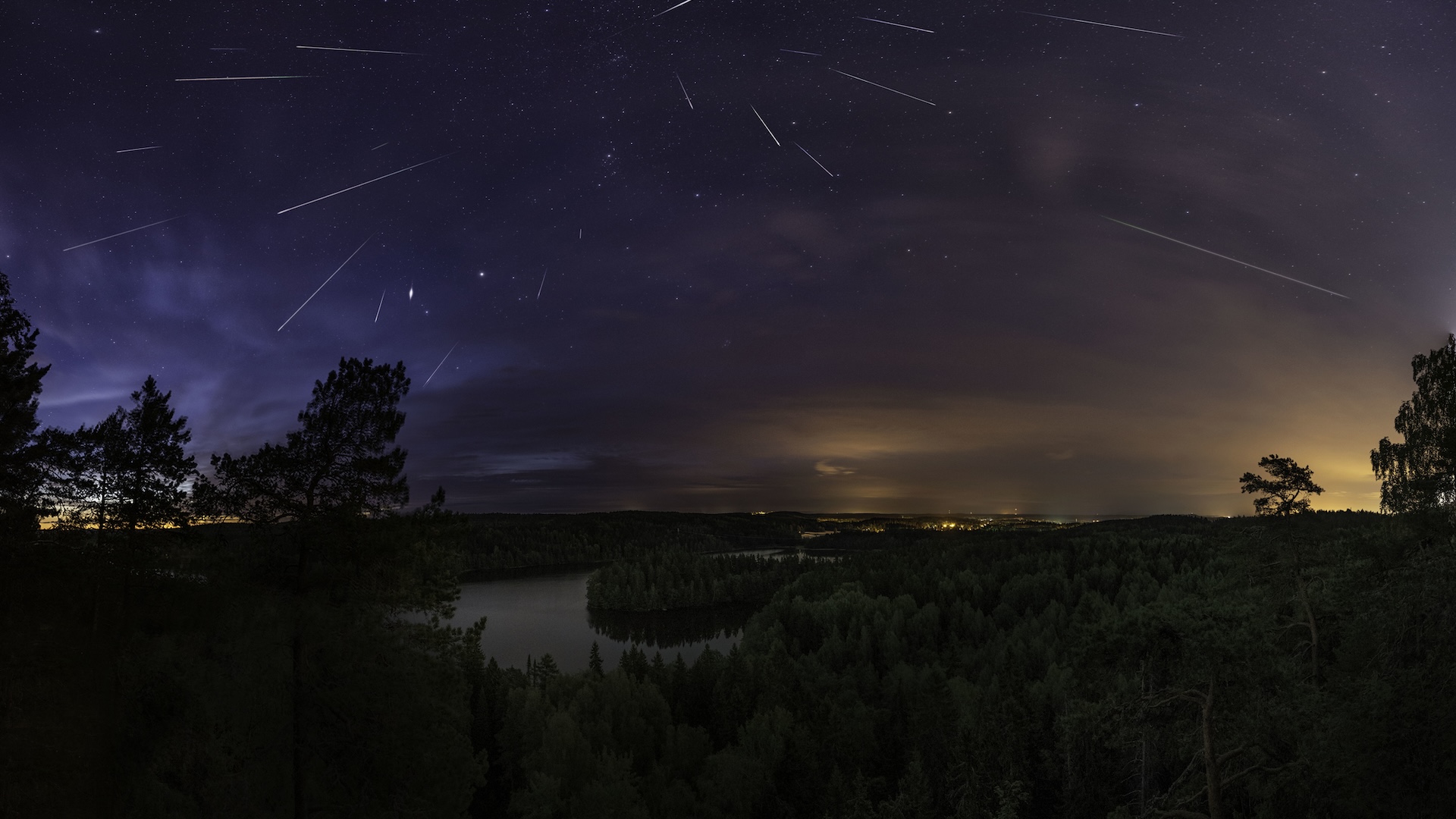Quadrantid meteor shower: How to watch the first 'shooting stars' of 2025 rain over Earth tonight
By Jamie Carter published 22 hours ago
The Quadrantids are the year's first shooting stars, peaking over North America between Jan. 3 and 4.

A long exposure photo of meteors in the night sky
(Image credit: Mika Wist / 500px via Getty Images)
The first and one of the most prolific meteor showers of 2025 will peak tonight, bringing super-bright fireballs and regular shooting stars.
The Quadrantid meteor shower is not particularly well known, running from Dec. 26, 2024, through Jan. 16, 2025, according to the American Meteor Society. That's largely because they occur for Northern Hemisphere observers during a time of cold and often cloudy weather.
However, if the skies are clear, about 25 shooting stars — some of them particularly bright fireballs that can momentarily light up the sky — may be seen during the peak, which will happen overnight on Thursday, Jan. 2, through Friday, Jan. 3, 2025. The peak is predicted for 12:45 p.m. on Jan. 3, meaning the best time to observe the showers is a couple of hours before sunrise on Jan. 3, though those farthest west will likely see the most meteors.
The Quadrantids occur thanks to the asteroid 2003 EH1, which orbits the sun every 5.5 years. From late December to mid-January, Earth moves through the streams of dust and debris it has left in the solar system over many decades. Between Jan. 3 and Jan. 4, it moves through the densest part of that stream, causing a peak in meteor rates.
Where to see the Quadrantid meteor shower
Astronomical conditions are perfect all night, with a crescent moon setting shortly after sunset on Jan. 2, meaning the night sky will be as dark as it ever gets. It's important before a meteor shower to avoid light pollution to better observe the light show, though likely cold conditions make that challenging.
More:
https://www.livescience.com/space/meteoroids/quadrantid-meteor-shower-how-to-watch-the-first-shooting-stars-of-2025-rain-over-earth-tonight
